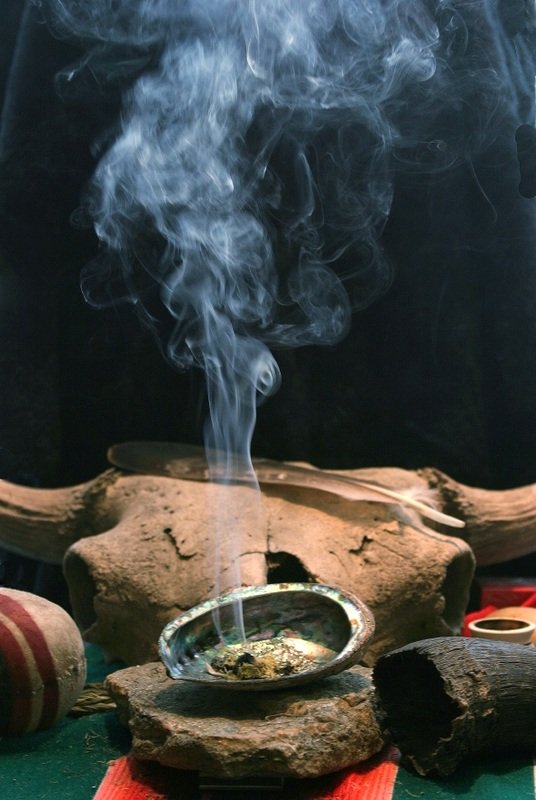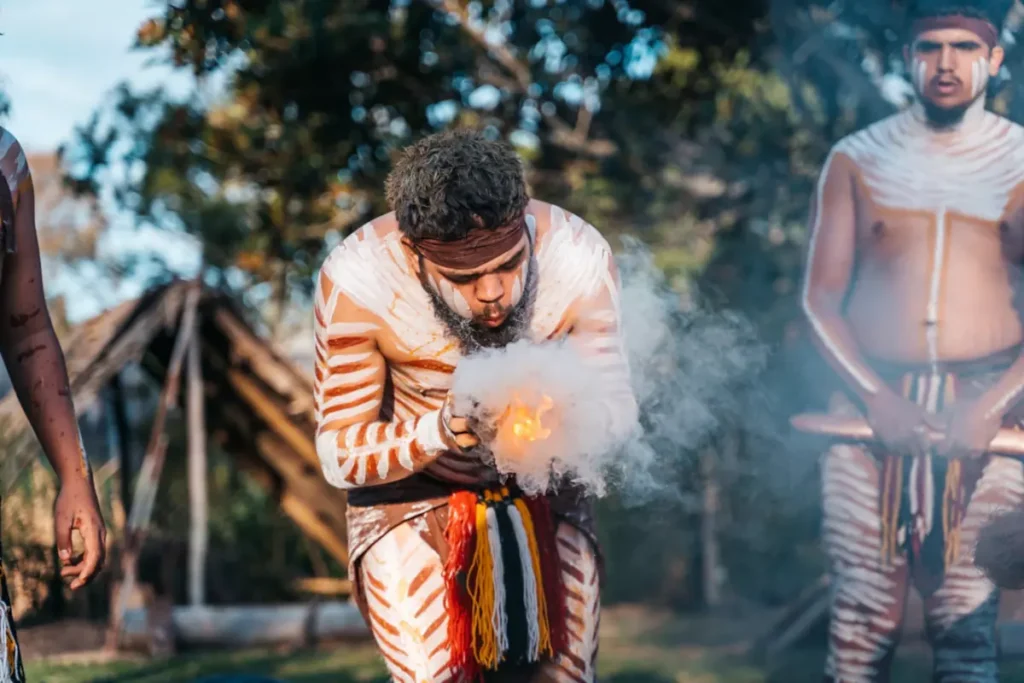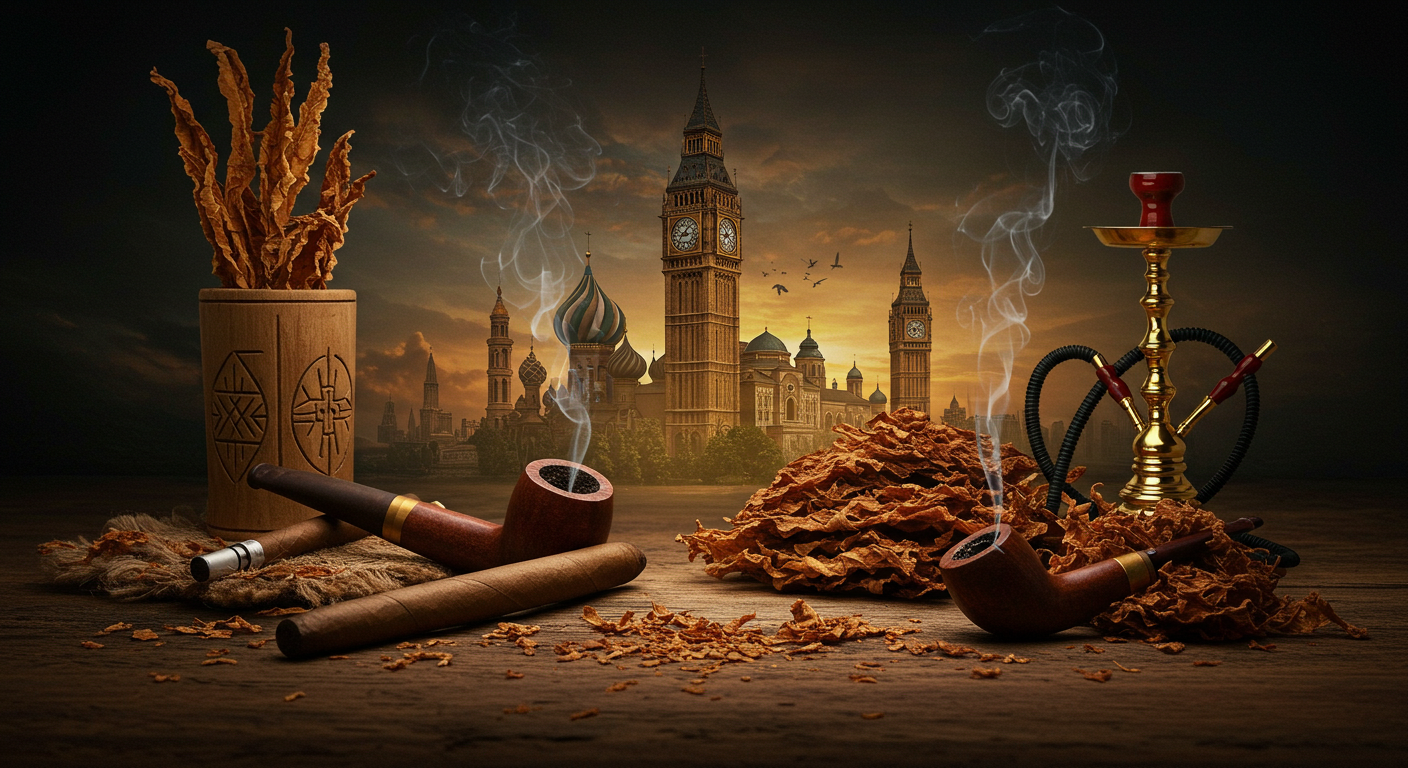Cigar history reveals a fascinating journey that intertwines with the cultural practices of indigenous peoples in the Americas. This journey showcases the significance of tobacco in rituals and ceremonies, highlighting its deep-rooted importance. As tobacco spread to Europe in the late 15th century, it transformed from a medicinal herb to a popular social activity. This transition marked a pivotal moment in the history of tobacco, influencing its perception and use across different cultures. The history of tobacco illustrates its evolution over centuries. Initially cultivated around 5000 BC, tobacco became integral to various cultures. Indigenous peoples used tobacco in spiritual practices, emphasizing its cultural significance. Later, in Europe, tobacco shops and smoking clubs emerged by the 17th century, reflecting its growing popularity. These establishments became social hubs, where individuals from various backgrounds gathered to share their experiences with tobacco.
Furthermore, the history of smoking encompasses diverse forms of consumption. Cigar and pipe tobacco gained prominence, leading to unique blends and collectible pipes. The artistry involved in crafting collectible pipes has become a significant aspect of tobacco culture, showcasing unique designs and materials used by artisans. In the Middle East, the rise of hookah as a social activity showcased cultural variations in tobacco use. This evolution continues today, with modern smoking devices adapting to reflect changing preferences.
In truth, tobacco’s popularity grew, so did its impact on society. However, growing awareness of health risks led to public health initiatives and regulations. Cultural perceptions shifted, transforming smoking from a fashionable activity to one viewed with caution. Legislation governing tobacco use and advertising emerged, reflecting society’s changing attitudes.
Discover How Cigar History Shaped Cultures and Connected Continents
Tobacco’s origins are deeply rooted in the practices of indigenous peoples in the Americas, where it played a vital role in various rituals and ceremonies. Evidence shows that tobacco cultivation began around 5000 BC, highlighting its long-standing importance. Explorers introduced tobacco to Europe in the late 15th century, marking a significant cultural exchange. This exchange not only altered European social practices but also initiated a complex relationship between the New World and the Old World. When explorers like Christopher Columbus encountered tobacco, they recognized its value. Columbus observed the Taino people using tobacco, which sparked interest in Europe. This introduction led to the establishment of tobacco as a commodity, influencing trade routes and economic systems. Consequently, tobacco became a staple in European social life, leading to the creation of smoking clubs and shops. These venues played a crucial role in shaping social interactions and cultural norms surrounding tobacco use.
Various forms of consumption emerged, including pipe tobacco and cigars. Collectible pipes gained popularity, reflecting the artistry involved in tobacco use. Additionally, the history of hookah introduced new social dynamics, particularly in Middle Eastern cultures, where it became a communal activity.
As tobacco’s popularity grew, so did its impact on society. The cash crop status of tobacco shaped economies and trade practices globally. However, the recognition of health risks associated with smoking led to changing perceptions. Public health initiatives emerged, prompting legislation that transformed tobacco use from a fashionable activity to one viewed with caution.
How Tobacco Transformed from Medicine to Social Rituals
Tobacco has a rich history in Europe, initially valued for its medicinal properties and later evolving into a popular social activity through pipe smoking. Early uses of tobacco in Europe focused on its perceived health benefits, as people believed it could cure various ailments. This medicinal reputation laid the groundwork for its widespread acceptance and use in social settings. As a result, tobacco began to permeate various aspects of daily life, becoming intertwined with social customs and practices. By the 17th century, smoking tobacco had transformed into a widespread social activity across Europe. This cultural shift resulted in the establishment of numerous tobacco shops and smoking clubs, where individuals gathered to enjoy their favorite blends. To put it another way, pipe smoking became synonymous with leisure and sophistication, appealing to various social classes. This association further entrenched tobacco’s status as a symbol of social standing and cultural refinement.
In addition, the evolution of tobacco consumption methods is illustrated through the history of smoking. The introduction of the smoking pipe allowed for a more refined experience, enhancing the enjoyment of tobacco. As a result, pipe smoking became synonymous with leisure and sophistication, appealing to various social classes.
Equally important, hookah has significantly influenced the cultural journey of tobacco throughout its history. Originating in the Middle East, hookah introduced a communal aspect to smoking, where friends gathered to share flavors and experiences. This practice further diversified the ways people enjoyed tobacco, enriching its cultural significance.
Another key point is that pipe tobacco gained popularity, it catered to diverse tastes and preferences. Smokers began to explore various blends, leading to a thriving market for unique flavors. This exploration fostered a community where individuals shared their experiences and recommendations, further enriching the culture surrounding pipe smoking.
On the whole, smoking practices evolve, enthusiasts appreciate the artistry involved in crafting unique pipes, which enhances their enjoyment of tobacco.

Cigar History Reveals the Fascinating Journey of Tobacco Consumption and Its Cultural Impact
The evolution of tobacco consumption has led to a rich culture surrounding smoking, particularly through the development of pipe tobacco and the artistry of collectible pipes. For that reason, tobacco consumption evolved, it fostered a rich culture surrounding smoking. This cultural evolution reflects the diverse ways in which people have engaged with tobacco throughout history.
Various forms of tobacco consumption, such as cigars and snuff, are highlighted in the history of smoking. Each method brought unique experiences and flavors, enriching the culture of smoking. Moreover, the rise of pipe tobacco created a distinct niche, appealing to those who appreciate the nuances of different blends. This niche market not only catered to connoisseurs but also encouraged innovation in tobacco production and consumption methods.
The artistry involved in crafting collectible pipes became a significant aspect of tobacco culture. Artisans designed pipes with unique materials and intricate patterns, reflecting personal expression and craftsmanship. Collectible pipes not only served functional purposes but also became cherished items among enthusiasts, enhancing the overall smoking experience.
As pipe tobacco gained popularity, it catered to diverse tastes and preferences. Smokers began to explore various blends, leading to a thriving market for unique flavors. This exploration fostered a community where individuals shared their experiences and recommendations, further enriching the culture surrounding pipe smoking.
As a matter of fact, the history of hookah introduced new social dynamics to tobacco consumption. Originating in the Middle East, hookah became a communal activity, where friends gathered to enjoy shared flavors. This practice diversified the ways people engaged with tobacco, creating a vibrant social scene that continues to thrive today.
Why the History Of Hookah Is More Important Than You Think
The hookah, originating in the 16th century Middle East, has evolved into a cultural symbol of social gatherings, with various regional adaptations and modern innovations in design. This transformation reflects the rich history of hookah as a social activity, often associated with hospitality and relaxation. Today, it serves as a focal point for friends and family to connect over shared experiences. This communal aspect of hookah smoking fosters a sense of belonging and cultural identity among participants.
The history of hookah dates back to the 16th century, where it became a popular social activity in the Middle East. Initially, it represented a means of hospitality, inviting guests to enjoy flavorful tobacco blends. Over time, different regions developed unique styles of smoking, showcasing their cultural variations and preferences.
In reality, the hookah’s design has undergone significant changes, adapting to modern tastes and materials. Traditional hookahs often feature intricate craftsmanship, while contemporary versions incorporate innovative designs and functionality. This evolution reflects the ongoing popularity of hookah in social settings, where it continues to foster connections among people. As such, hookah has become a bridge between tradition and modernity, appealing to both older and younger generations alike.
Not to mention, the history of smoking encompasses various devices, including tobacco pipes and collectible pipes. Each method of consumption offers distinct experiences, enriching the culture surrounding tobacco. As smoking practices evolve, enthusiasts appreciate the artistry involved in crafting unique pipes, which enhances their enjoyment of tobacco.
Moreover, the emergence of alternative products like vaping reshaped consumer habits. These innovations allow users to explore new flavors and experiences, ensuring that the tradition of smoking remains vibrant. The cultural significance of these devices continues to thrive, reflecting the enduring appeal of tobacco in social interactions.

Discover How Cigar History Shapes Our Understanding of Health and Culture
The history of tobacco reveals its significant economic influence, evolving health implications, and changing cultural perceptions over time. Tobacco has played a crucial role in shaping economies, particularly in the Americas, where it became a major cash crop. This crop influenced trade routes and colonization efforts, highlighting its importance in global commerce. The economic impact of tobacco extended beyond mere trade, affecting social structures and community dynamics as well.
For the same reason, the health implications of tobacco use have evolved dramatically. As smoking gained popularity, awareness of its associated health risks increased. Public health campaigns emerged to educate the public about these dangers, leading to regulations that aimed to reduce smoking rates. In like manner, the recognition of health risks associated with smoking prompted a shift in public perception, leading to health initiatives and regulations that transformed tobacco use into a more cautious activity.
Cultural perceptions surrounding tobacco have also changed over time. Initially, smoking was celebrated as a social ritual, often associated with sophistication and leisure. Nevertheless, the recognition of health risks associated with smoking led to changing perceptions. Despite health risks becoming more apparent, society began to view smoking through a more critical lens. This shift affected social acceptance, leading to a decline in smoking’s popularity in many regions. Consequently, public discourse around tobacco has evolved, reflecting broader societal concerns about health and wellness.
In the event that, the history of smoking reflects the diverse methods of consumption that have emerged. Pipe tobacco and collectible pipes became popular, showcasing the artistry involved in tobacco use. Similarly, the history of hookah introduced new social dynamics, particularly in Middle Eastern cultures, where it became a communal activity. These variations highlight the rich cultural tapestry surrounding tobacco consumption.
In the final analysis, the history of tobacco reveals a complex interplay between cultural significance and health implications. The evolution of tobacco from a cash crop to a subject of health discourse illustrates its complex legacy. As society continues to grapple with the implications of tobacco use, its historical significance remains relevant in contemporary discussions.
History Of Smoking Faces A Revolution You Won’t Believe
The tobacco industry is undergoing significant transformation due to evolving legislation, declining smoking rates, and the emergence of alternative products like vaping. This shift reflects changing societal attitudes towards smoking and health awareness. As a result, governments worldwide have implemented various laws regulating tobacco use, advertising, and sales, reflecting changing attitudes towards smoking. These legislative measures signify a broader commitment to public health and the well-being of future generations.
Legislation has become a crucial factor in shaping the future of tobacco. Governments have enacted strict regulations to control advertising and sales, particularly targeting youth. These laws aim to reduce smoking rates and promote public health, demonstrating a significant shift in societal values regarding tobacco consumption.
The future of tobacco appears challenging as smoking rates decline globally. Many consumers are turning to alternatives like vaping, which has gained popularity for its perceived safety. Moreover, the emergence of alternative products like vaping reshaped consumer habits. Consequently, the tobacco industry is innovating its product offerings to adapt to these changes, focusing on developing new products that align with current consumer preferences.
The history of smoking has shaped social interactions and community gatherings, particularly through the use of pipe tobacco and collectible pipes. As the industry adapts to new realities, the conversation about tobacco’s role in society will undoubtedly continue to evolve.
In summary, the history of tobacco reveals a complex interplay between cultural significance and health implications. The evolution of smoking practices, including the rise of hookah and pipe tobacco, showcases the diverse ways people engage with tobacco. As the industry adapts to new realities, the conversation about tobacco’s role in society will undoubtedly continue to evolve.

Discovering Cigar History Unveils the Profound Effects of Tobacco on Our World
The journey of tobacco reveals a complex tapestry of culture, economy, and health that continues to evolve today. Understanding this history enriches our appreciation for tobacco’s role in society and its ongoing transformations.
The history of tobacco traces back to indigenous peoples in the Americas, where it held deep cultural significance. Rituals and ceremonies often featured tobacco, showcasing its importance in social and spiritual contexts. When explorers introduced tobacco to Europe in the late 15th century, it sparked a fascination that led to its widespread use. Initially, Europeans valued tobacco for its medicinal properties, but it soon became a popular social activity through pipe smoking.
As tobacco consumption evolved, it fostered a rich culture surrounding smoking. The development of pipe tobacco and the artistry of collectible pipes became prominent. The history of hookah also plays a significant role, as it emerged in the 16th century Middle East. Hookah evolved into a cultural symbol of social gatherings, with various regional adaptations and modern innovations enhancing its appeal.
The economic influence of tobacco cannot be overstated. Over time, the industry faced significant transformations due to evolving legislation and declining smoking rates. Additionally, the emergence of alternative products like vaping reshaped consumer habits. The changing cultural perceptions of tobacco reflect broader societal shifts regarding health and wellness. In sum, the history of smoking, including cigar history, highlights the intricate relationship between culture, economy, and health that continues to unfold.
Ultimately, the rich history of tobacco, from its indigenous roots to modern adaptations, illustrates its lasting impact on society. In order that understanding this history will guide our perspectives on tobacco and its role in our lives.
Listen to an AI-Generated Podcast of this Blog
Uncovering the Surprising Roots of Tobacco’s Cultural Journey
Did you know that the history of tobacco dates back to around 5000 BC? Initially, indigenous peoples in the Americas used tobacco in spiritual rituals. What’s more, explorers introduced tobacco to Europe in the late 15th century. This marked a significant cultural exchange that transformed tobacco’s role. Initially, Europeans valued tobacco for its medicinal properties. However, it quickly evolved into a popular social activity through pipe smoking. To this end, the history of smoking saw the rise of smoking pipes and collectible pipes. These artifacts showcased the artistry involved in tobacco use. Conversely, the history of hookah emerged in the Middle East, becoming a communal activity. All in all, tobacco’s journey reflects its profound impact on culture and society.
FAQs
What can you tell me about the history of tobacco?
Tobacco’s history traces back to indigenous peoples in the Americas, where it held deep cultural significance in rituals.
How did tobacco become popular in Europe?
Explorers introduced tobacco to Europe in the late 15th century, initially valuing it for its medicinal properties.
What role did pipe tobacco play in smoking culture?
Pipe tobacco fostered a rich culture surrounding smoking, leading to the development of unique blends and collectible pipes.
Can you explain the significance of collectible pipes?
Collectible pipes showcase the artistry involved in tobacco use, reflecting personal expression and craftsmanship among enthusiasts.
How did the history of hookah influence tobacco consumption?
The history of hookah introduced communal smoking, becoming a cultural symbol of social gatherings in the Middle East.
What are the health implications associated with tobacco use?
Health risks associated with smoking led to public health campaigns and regulations aimed at reducing smoking rates.
How has the perception of smoking changed over time?
Initially celebrated as a social ritual, smoking now faces scrutiny due to health risks and changing societal attitudes.
What transformations is the tobacco industry currently facing?
The tobacco industry faces challenges from declining smoking rates and the rise of alternative products like vaping.
How did the history of smoking evolve with different devices?
The history of smoking includes various devices, such as tobacco pipes and hookahs, enriching the culture of tobacco consumption.
What is the connection between cigar history and cultural significance?
Cigar history illustrates the intricate relationship between culture, economy, and health, reflecting tobacco’s lasting impact on society.
Come Visit Us
We have three fantastic locations we’d love to invite you to! If you’re in the Chicagoland area, you can come chill with us at either our Grayslake or Schaumburg locations. Alternatively, if you’re in Wisconsin, stop by and visit us at our Kenosha lounge. Please note that you must be 21+ to enter with a valid ID. We hope to see you soon!


